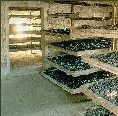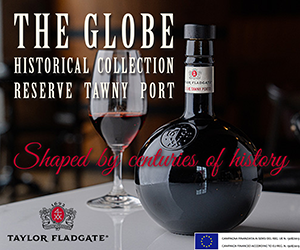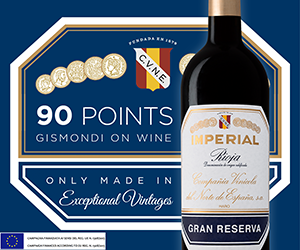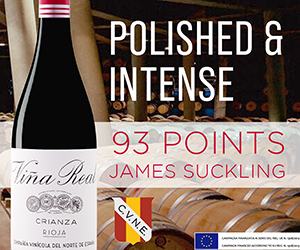Italian winemaker Sandro Boscaini is a Veneto legend, and the modern-day father of Valpolicella.
Energy, excitement, passion and courage are just a few terms that describe the dynamo behind Masi wines.
Boscaini is perhaps best known for changing the image of Valpolicella from the lightweight, pizza red we knew in the '70s to the much more mainstream Italian dinner wine we now appreciate.
The Masi label takes its name from the "Vaio dei Masi," little valley of the Masi, in the Negrar Valley northwest of Veneto, an area within the classico or historic zone of Valpolicella production.
Boscaini's ancestors showed excellent judgment at the end of the 18th century when they began acquiring vineyard land. The family business now owns an impressive collection of sites across the classico zones of Valpolicella, Bardolino and Soave.
Today, a look at the current Boscaini offerings sold under the well-known Masi label. With the exception of the Amarone, available only in selected specialty outlets, all should be widely available in government stores.
The Soave Classico is grown on deep, loose-textured soils of basalt and volcanic rock at Monteforte d'Alpone, within the Soave classico zone. The prime grape is the garganega and the wine is entirely fermented in stainless steel. The structure is lean, dry and fresh, with flavours of citrus and almond. A classic match for lightly spiced seafood.
The Modello is described as "a new wave Venetian red" -- and the "new wave" part is immediately obvious when you pull its bright white synthetic cork. The grapes are an unusual mix: Corvina and raboso Veronese. According to Masi, the typical characteristics of the corvina provide colour, bouquet and the flavour of cherries; the raboso Veronese contributes tannins, richness and vitality.
I found the wine to be round and smooth on entry, with an unmistakable bitter cherry flavour. It's a perfect mid-week dinner red or would be fine served with any classic Italian hard cheese.
Masi Valpolicella Classico is made with three of the four traditional Valpolicella grapes: corvina, rondinella and molinara. After harvest, the varieties are fermented separately for 10 to 18 days before blending and aging in 90,000-litre Slavonian oak barrels for 12 to 18 months. The large vats help mellow the wine's character without adding any obvious oak flavouring.
Hemingway once described Valpolicella as "congenial as a brother's house with which you have warm feelings." I found similar traits in this one, with lots of round, velvety textures and plenty of pretty cherry flavours. Risottos and soft cheeses would be fine matches.
The Aligheri Valpolicella Classico Superiore is made and marketed by Masi, but the vineyards belong to the Serègo Alighieri family, the oldest in the area and direct descendants of the poet Dante. Since 1353, when Dante's son, Pietro, purchased the property in Gargagnago, the family has farmed the same vineyards over an uninterrupted span of 20 generations.
The blend is traditional: corvina, rondinella and molinara, but with a difference. The molinara is the Serègo Alighieri clone -- a sub-variety grown only at the estate and propagated from 11 pre-phylloxera vines planted in the courtyard in 1875. They're still alive and healthy today.
Look for high-toned earthy, prune and cherry fruit, with a streak of spice. The structure is round and soft, making this very easy to drink. Unlike most Valpolicella, the Aligheri should age comfortably for nearly a decade.
Campofiorin is Valpolicella made by Masi technicians using an ancient Veronese vinification system known as re-fermentation. Boscaini gave the name "Ripasso" to the resulting wine and patented the term.
Since its inaugural vintage in 1964, Campofiorin has been re-fermented on the residual pomace of the dried grapes used for the production of Amarone. The additional fermention on the semi-dried powerful Amarone lees adds extra body and sheen to the original Valpolicella, and elegance and ripeness that are well worth tasting. Look for a delicious mix of chocolate, berries and tobacco. It's dry, full and supple, with more mocha/berry-fruit flavours. Ready to drink.
Finally the Costasera 1998 Amarone Classico is made with grapes grown on the "coasts" or slopes that face the sunset. Aromas of dried cherries, spice, prunes and barnyard preview port-like chocolate and cherry flavours. It's big and rich, yet smooth, and almost drinkable now -- though likely at its best in three years. Serve with game and strong cheeses.
WEEKEND WINE TASTING: MASI, VENETO, ITALY
Producer: Soave 2000 Classico
Price: $12.95
Stock No.: 266221
Score: 13.5/20
Comments: Svelte, with citrus and almonds.
Producer: Modello Delle Venezie 2000
Price: $11.95
Stock No.: 533026
Score: 14/20
Comments: New-wave Venetian red.
Producer: Valpolicella 1999 Classico
Price: $13.95
Stock No.: 285585
Score: 14/20
Comments: Smooth, nutty cherry flavours.
Producer: Serego Aligheri 1998 Valpolicella Classico
Price: $17.95
Stock No.: 447326
Score: 14.5/20
Comments: Earth, prune and spice.
Producer: 1998 Campofiorin
Price: $18.95
Stock No.: 155051
Score: 15/20
Comments: New-style Veronese red.
Producer: Costasera 1998 Amarone Classico
Price: $38.95
Stock No.: 317057
Score: 16/20
Comments: Big, meaty; strong-flavoured red.
Written By: ag

 quicksearch
quicksearch






